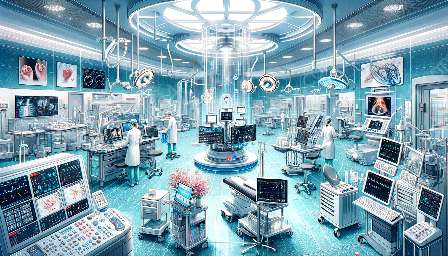Healthcare is being revolutionized by the intersection of bioengineering and medical devices, particularly in the realm of wearable technology. The collaboration between these fields is paving the way for advanced, personalized, and non-invasive medical devices that can monitor, diagnose, and treat various health conditions. This article explores how bioengineering contributes to the development of wearable medical devices and its impact on healthcare.
The Role of Bioengineering
Bioengineering, also known as biomedical engineering, is a multidisciplinary field that combines principles of engineering, biology, and medicine to develop innovative solutions for healthcare challenges. Its application in wearable medical devices involves leveraging knowledge of human physiology, sensor technology, material science, and data analytics to create devices that can seamlessly integrate with individuals' daily lives.
Advancements in Sensor Technology
One of the primary ways bioengineering contributes to wearable medical devices is through advancements in sensor technology. The integration of biosensors, such as electrochemical, optical, and biochemical sensors, allows these devices to collect physiological data, including heart rate, blood glucose levels, and body temperature, in real-time. This continuous monitoring offers critical insights into an individual's health status, enabling early detection of abnormalities and proactive intervention.
Miniaturization and Biocompatible Materials
Bioengineering plays a crucial role in the miniaturization of medical devices, making them lightweight and unobtrusive for comfortable, long-term wear. Furthermore, the development of biocompatible materials, such as flexible polymers and biodegradable components, ensures that these devices are safe for extended contact with the skin. This emphasis on user comfort and safety increases the likelihood of widespread acceptance and adoption of wearable medical devices among patients and healthcare providers.
Personalized Healthcare Solutions
Customization is a cornerstone of bioengineering, and its influence extends to wearable medical devices. By leveraging advances in data analytics and machine learning, these devices can process individualized physiological data and provide personalized healthcare insights and recommendations. For example, wearable devices equipped with artificial intelligence algorithms can analyze a person's activity levels and vital signs to offer tailored exercise and dietary guidance, ultimately promoting preventive care and wellness.
Wireless Connectivity and Data Security
Bioengineering contributes to the development of wearable medical devices by enabling seamless wireless connectivity and robust data security measures. These devices can transmit real-time health data to healthcare providers or cloud-based platforms, facilitating remote monitoring and timely intervention. Additionally, bioengineers focus on implementing encryption protocols and authentication mechanisms to safeguard sensitive medical information, thus ensuring the privacy and confidentiality of patient data.
Accessible Healthcare Monitoring
The synergy between bioengineering and wearable medical devices has the potential to democratize healthcare access. With the increasing prevalence of smartphones and smartwatches, individuals can conveniently monitor their health status without relying solely on in-person medical consultations. This accessibility empowers patients to take a proactive role in managing their well-being and reduces the burden on healthcare systems, particularly in remote or underserved areas.
Integration with Telemedicine
Bioengineering also contributes to the seamless integration of wearable devices with telemedicine platforms. By enabling real-time video consultations and data exchange between patients and healthcare professionals, these devices facilitate remote diagnosis, treatment, and follow-up care. This integrated approach not only enhances the efficiency of healthcare delivery but also improves patient outcomes, especially for individuals with chronic conditions who require ongoing monitoring and support.
Conclusion
The fusion of bioengineering and wearable medical devices holds immense promise for transforming healthcare delivery. Through continuous innovation and collaboration, bioengineers are driving the development of advanced, user-friendly, and personalized devices that have the potential to enhance patient care, promote preventive medicine, and improve healthcare accessibility. As this synergy continues to evolve, the future of wearable medical devices appears increasingly bright, offering unprecedented opportunities for personalized health monitoring and management.


